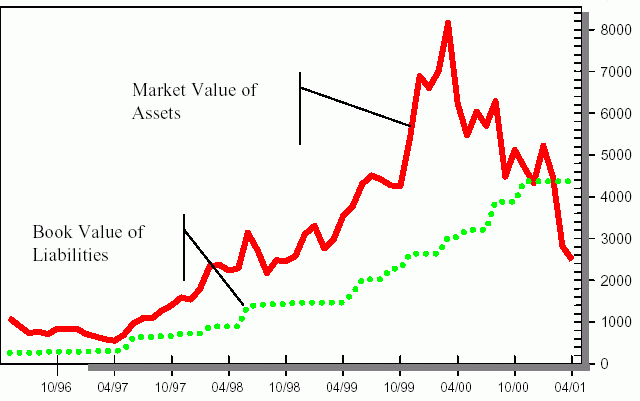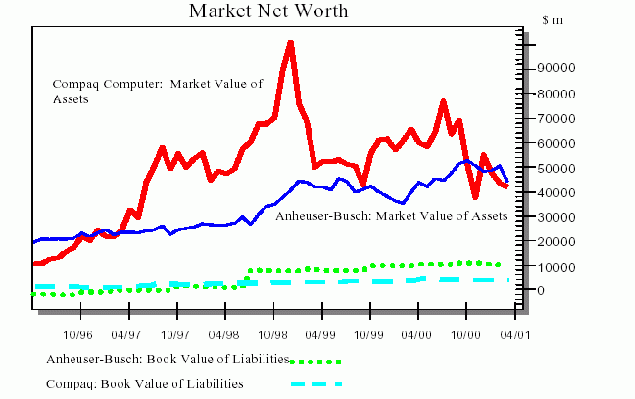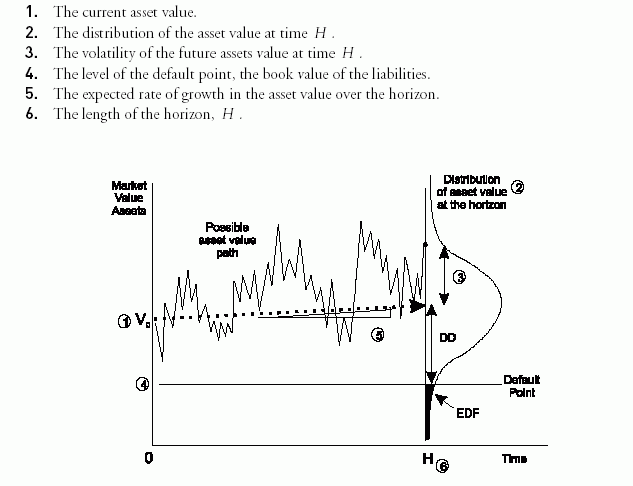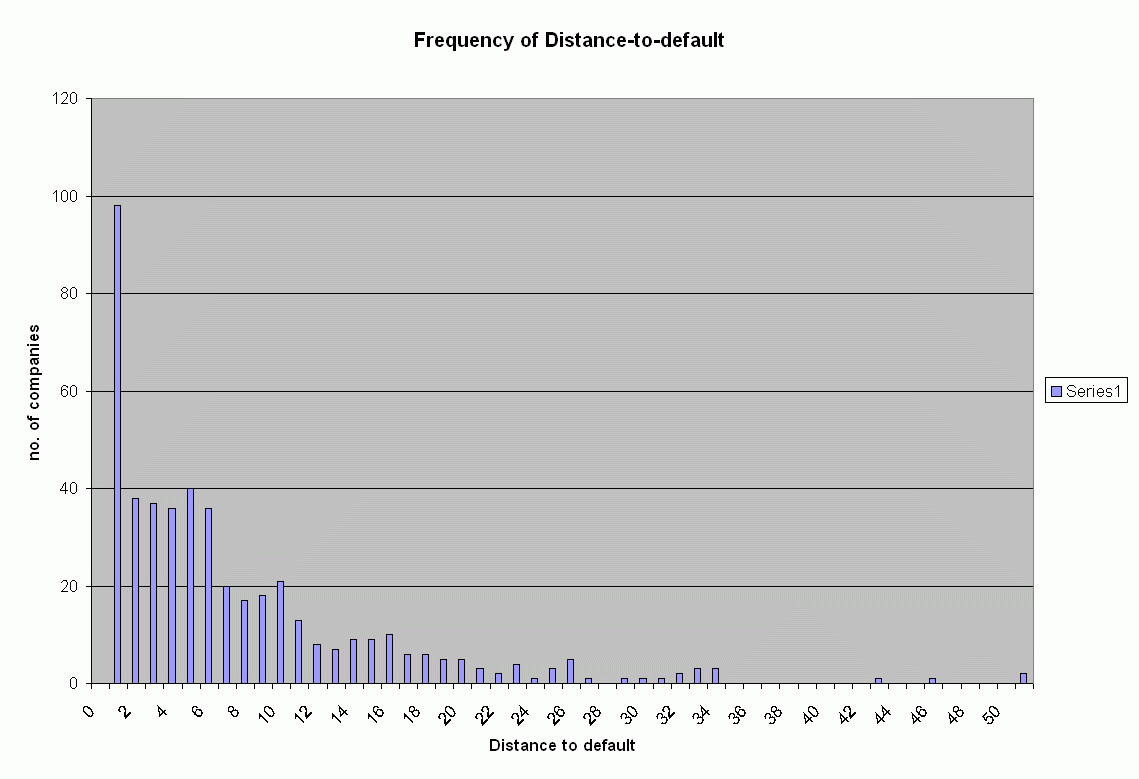Expected Default Frequency Measure
There are three main elements that determine the default probability of a firm:
Value of Assets:the market value of a firm's assets
Asset Risk:The uncertainity or risk of the asset value
Leverage: The extent of the firm's contractual liabilities

The default risk of the firm increases as the value of the assets approaches the book value of
the liabilities, untill finally the firm defaults when the market value of assets is insufficient
to repay the liabilities.
In general firms do not default when their asset value reaches their book value of liabilities.
While some firms certainly default at this point,many continue to trade and service their debts.
The long-term nature of some of their liabilities provides these firms with some breathing space.
The default point, the asset value at which the firm will default, generally lies somewhere between
total liabilities and current, short-term liabilities.
The relevant net worth of the firm is therefore the market value of the firm's assets minus the firm's default point.
Market Net Worth = [Market Value of Assets - Default Point ]
A firm will default when its market net worth reaches zero.

A firm's leverage has the effect of magnifying its underlying asset volatility.As a result,
industries with low asset volatility(for example banking) tend to take on larger amounts of leverage
while industries with high asset volatility (for example, computer software) tend to take on less.
As a consequence of these compensatory differences in leverage,equity volatility is far less
differentiated by industry and size than is asset volatility.
Asset value, business risk and leverage can be combined into a single measure of default risk which
compares the market net worth to the size of a one standard deviation move in asset value.We refer
to this ratio as Distance - to - default and is calculated as:
[Distance to Default] = [Market Value of Assets] - [Default Point]/[Market Value of Assets]*[Asset Volatility]
The default probability can be computed directly from the distance to default if the probability
distribution of the assets is known,or,equivalently, if the default rate for a given level of
distance-to-default is known.

I have integrated the calculation of asset volatility and the estimation of the furture market
value of assets at a given point in time with the Black-Scholes model discussed next. However,
a naive implementation of calculating the Distance-to-Default involved calculating it using the following
equation:
[Distance to Default] = [Value of Assets] - [Default Point]/[Standard Deviation of Asset Values]
Results
Click here to see the Distance to default calculated for S&P 500 companies.
Click here for the code.




